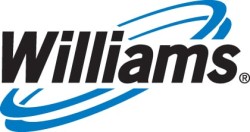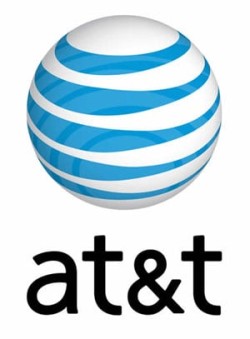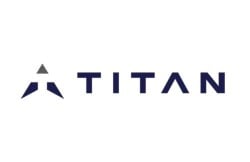
Williams Companies Inc (NYSE:WMB) – Analysts at Jefferies Financial Group cut their FY2019 EPS estimates for Williams Companies in a note issued to investors on Wednesday, July 18th. Jefferies Financial Group analyst C. Sighinolfi now anticipates that the pipeline company will earn $0.93 per share for the year, down from their prior estimate of $1.29. Jefferies Financial Group currently has a “Buy” rating and a $34.00 target price on the stock.
Get Williams Companies alerts:A number of other equities research analysts have also recently weighed in on WMB. ValuEngine upgraded shares of Williams Companies from a “sell” rating to a “hold” rating in a research report on Thursday. US Capital Advisors reiterated a “buy” rating on shares of Williams Companies in a research report on Tuesday, July 17th. Scotiabank upgraded shares of Williams Companies from a “sector perform” rating to a “buy” rating in a research report on Friday, May 18th. Zacks Investment Research upgraded shares of Williams Companies from a “strong sell” rating to a “hold” rating in a research report on Friday, April 20th. Finally, Seaport Global Securities assumed coverage on shares of Williams Companies in a research report on Wednesday, April 25th. They set a “buy” rating and a $28.00 price target for the company. Five analysts have rated the stock with a hold rating and twelve have assigned a buy rating to the company’s stock. The stock has a consensus rating of “Buy” and a consensus price target of $33.31.
Shares of WMB opened at $28.80 on Friday. Williams Companies has a 1-year low of $24.00 and a 1-year high of $33.67. The stock has a market cap of $23.75 billion, a price-to-earnings ratio of 45.71 and a beta of 1.39. The company has a quick ratio of 1.03, a current ratio of 1.11 and a debt-to-equity ratio of 1.34.
Williams Companies (NYSE:WMB) last announced its quarterly earnings results on Wednesday, May 2nd. The pipeline company reported $0.19 earnings per share for the quarter, missing analysts’ consensus estimates of $0.21 by ($0.02). Williams Companies had a net margin of 24.02% and a return on equity of 3.61%. The company had revenue of $2.09 billion for the quarter, compared to analyst estimates of $2.09 billion. During the same quarter in the prior year, the business earned $0.14 earnings per share.
Several hedge funds and other institutional investors have recently bought and sold shares of WMB. BlackRock Inc. lifted its stake in Williams Companies by 13.4% in the first quarter. BlackRock Inc. now owns 87,783,397 shares of the pipeline company’s stock worth $2,182,295,000 after acquiring an additional 10,354,857 shares during the last quarter. Franklin Resources Inc. lifted its stake in Williams Companies by 19.9% in the first quarter. Franklin Resources Inc. now owns 26,256,271 shares of the pipeline company’s stock worth $652,731,000 after acquiring an additional 4,364,798 shares during the last quarter. Millennium Management LLC lifted its stake in Williams Companies by 5,129.6% in the first quarter. Millennium Management LLC now owns 4,391,858 shares of the pipeline company’s stock worth $109,182,000 after acquiring an additional 4,307,878 shares during the last quarter. Hamlin Capital Management LLC purchased a new position in Williams Companies in the second quarter worth approximately $80,810,000. Finally, Canyon Capital Advisors LLC purchased a new position in Williams Companies in the first quarter worth approximately $70,055,000. 85.59% of the stock is owned by institutional investors and hedge funds.
In other Williams Companies news, Director Stephen I. Chazen acquired 4,000 shares of the stock in a transaction dated Friday, May 25th. The stock was acquired at an average price of $26.71 per share, with a total value of $106,840.00. Following the completion of the purchase, the director now owns 29,610 shares in the company, valued at approximately $790,883.10. The purchase was disclosed in a document filed with the SEC, which is available through this hyperlink. Also, VP Ted T. Timmermans sold 12,392 shares of the firm’s stock in a transaction that occurred on Tuesday, May 22nd. The shares were sold at an average price of $28.08, for a total transaction of $347,967.36. Following the completion of the transaction, the vice president now directly owns 27,347 shares of the company’s stock, valued at approximately $767,903.76. The disclosure for this sale can be found here. Company insiders own 0.53% of the company’s stock.
The firm also recently disclosed a quarterly dividend, which was paid on Monday, June 25th. Stockholders of record on Friday, June 8th were paid a $0.34 dividend. This represents a $1.36 annualized dividend and a dividend yield of 4.72%. The ex-dividend date of this dividend was Thursday, June 7th. Williams Companies’s payout ratio is 215.87%.
Williams Companies Company Profile
The Williams Companies, Inc operates as an energy infrastructure company primarily in the United States. It owns and operates natural gas pipeline system extending from Texas, Louisiana, Mississippi, and the Gulf of Mexico through Alabama, Georgia, South Carolina, North Carolina, Virginia, Maryland, Delaware, Pennsylvania, and New Jersey to the New York City metropolitan area.
Read More: Book Value Per Share �� BVPS
 Michael A. Robinson
Michael A. Robinson Traders bought shares of AT&T Inc. (NYSE:T) on weakness during trading hours on Thursday. $303.51 million flowed into the stock on the tick-up and $177.90 million flowed out of the stock on the tick-down, for a money net flow of $125.61 million into the stock. Of all equities tracked, AT&T had the highest net in-flow for the day. AT&T traded down ($0.11) for the day and closed at $32.60
Traders bought shares of AT&T Inc. (NYSE:T) on weakness during trading hours on Thursday. $303.51 million flowed into the stock on the tick-up and $177.90 million flowed out of the stock on the tick-down, for a money net flow of $125.61 million into the stock. Of all equities tracked, AT&T had the highest net in-flow for the day. AT&T traded down ($0.11) for the day and closed at $32.60 Pool (NASDAQ:POOL) was downgraded by Zacks Investment Research from a “buy” rating to a “hold” rating in a report issued on Wednesday.
Pool (NASDAQ:POOL) was downgraded by Zacks Investment Research from a “buy” rating to a “hold” rating in a report issued on Wednesday.  Post to FacebookPosted!
Post to FacebookPosted! San Antonio: Embrace the summer heat with an affordable summer vacation to Texas�� emerging city, San Antonio. Plenty of free attractions, including the Alamo, plus low costs for food and drink make it an affordable summer vacation. Round-trip airfare averages around $300 round-trip from both Los Angeles and New York City for the summer months. Sean Pavone, Getty Images/iStockphotoFullscreen
San Antonio: Embrace the summer heat with an affordable summer vacation to Texas�� emerging city, San Antonio. Plenty of free attractions, including the Alamo, plus low costs for food and drink make it an affordable summer vacation. Round-trip airfare averages around $300 round-trip from both Los Angeles and New York City for the summer months. Sean Pavone, Getty Images/iStockphotoFullscreen Zanzibar: If Tanzania��s Zanzibar is on your bucket list, don��t wait to book this summer vacation at an affordable rate. For the most savings, fly into Dar es Salaam via a stopover in Istanbul with Turkish Airlines, Abu Dhabi with Etihad, or Dubai with Emirates. This way, you can get two vacations for the price of one flight. Moiz Husein, Getty Images/iStockphotoFullscreen
Zanzibar: If Tanzania��s Zanzibar is on your bucket list, don��t wait to book this summer vacation at an affordable rate. For the most savings, fly into Dar es Salaam via a stopover in Istanbul with Turkish Airlines, Abu Dhabi with Etihad, or Dubai with Emirates. This way, you can get two vacations for the price of one flight. Moiz Husein, Getty Images/iStockphotoFullscreen Washington, D.C., metro area: D.C. is WalletHub��s top destination for summer travel this year, and with average domestic airfare at $300 to DCA for the season, you can travel to the city cheaply from almost any U.S. city, with the least expensive month for airfare in September. An abundance of free attractions �� including all of the Smithsonian museums and the zoo �� keep costs low without sacrificing fun. Getty Images/iStockphotoFullscreen
Washington, D.C., metro area: D.C. is WalletHub��s top destination for summer travel this year, and with average domestic airfare at $300 to DCA for the season, you can travel to the city cheaply from almost any U.S. city, with the least expensive month for airfare in September. An abundance of free attractions �� including all of the Smithsonian museums and the zoo �� keep costs low without sacrificing fun. Getty Images/iStockphotoFullscreen Orlando: While the weather and crowds are at their peak, median airfare and nightly hotel rates are lower this summer in Orlando. Median round-trip airfare from U.S. and Canadian destinations is about $200, with nightly hotel rates hovering around $125. Sean Pavone, Getty Images/iStockphotoFullscreen
Orlando: While the weather and crowds are at their peak, median airfare and nightly hotel rates are lower this summer in Orlando. Median round-trip airfare from U.S. and Canadian destinations is about $200, with nightly hotel rates hovering around $125. Sean Pavone, Getty Images/iStockphotoFullscreen Budapest, Hungary: Another affordable European destination for this summer is Budapest. Here, you��ll get two cities for the price of one �� Buda and Pest, separated by the Danube River. With new routes from American Airlines launching this summer to/from Philadelphia, competition is driving airfare prices down. Andrey Danilovich, Getty Images/iStockphotoFullscreen
Budapest, Hungary: Another affordable European destination for this summer is Budapest. Here, you��ll get two cities for the price of one �� Buda and Pest, separated by the Danube River. With new routes from American Airlines launching this summer to/from Philadelphia, competition is driving airfare prices down. Andrey Danilovich, Getty Images/iStockphotoFullscreen Tahiti: If you��re located on the West Coast, this year is one of the most affordable times to head to Tahiti. Why? This May, French budget airline Frenchbee launched non-stop service from San Francisco (SFO) to Tahiti (PPT). Searches for summer airfare yield results well under $1,000 round-trip, which is unheard of for this exotic destination. Travel in August to take advantage of fares under $750 round-trip. Getty Images/iStockphotoFullscreen
Tahiti: If you��re located on the West Coast, this year is one of the most affordable times to head to Tahiti. Why? This May, French budget airline Frenchbee launched non-stop service from San Francisco (SFO) to Tahiti (PPT). Searches for summer airfare yield results well under $1,000 round-trip, which is unheard of for this exotic destination. Travel in August to take advantage of fares under $750 round-trip. Getty Images/iStockphotoFullscreen Denver: With mild weather and plenty of museums to explore, Denver is a family-friendly and affordable summer vacation this year. According to WalletHub��s Best Places to Visit in Summer, Denver ranks sixth, earning a spot for its low travel costs and minimal hassles. KAYAK��s 2018 Travel Hacker guide also lists median airfare to Denver under $250 round-trip from the U.S. and Canada for the summer months, and median hotel nightly rates around $150. Getty Images/iStockphotoFullscreen
Denver: With mild weather and plenty of museums to explore, Denver is a family-friendly and affordable summer vacation this year. According to WalletHub��s Best Places to Visit in Summer, Denver ranks sixth, earning a spot for its low travel costs and minimal hassles. KAYAK��s 2018 Travel Hacker guide also lists median airfare to Denver under $250 round-trip from the U.S. and Canada for the summer months, and median hotel nightly rates around $150. Getty Images/iStockphotoFullscreen Albania: Summer is arguably the best time for a European vacation because of the great weather and easy accessibility, but popular cities are crowded and expensive. Check out Albania as an alternative to pricey Mediterranean destinations. While direct airline routes are hard to come by from the U.S., Tirana (the country��s main international airport) recently opened up routes with Wizz Air, and has affordable fares from London-area airports for under $200 round-trip. Getty Images/iStockphotoFullscreen
Albania: Summer is arguably the best time for a European vacation because of the great weather and easy accessibility, but popular cities are crowded and expensive. Check out Albania as an alternative to pricey Mediterranean destinations. While direct airline routes are hard to come by from the U.S., Tirana (the country��s main international airport) recently opened up routes with Wizz Air, and has affordable fares from London-area airports for under $200 round-trip. Getty Images/iStockphotoFullscreen San Jose del Cabo, Mexico: You��ll find savings and a favorable exchange rate in Mexico this summer. Skip out on party-centric Cabo San Lucas and head to ��the other Cabo,�� San Jose del Cabo, instead. Low airfare to Cabo stands out this season; the average cost of a round-trip flight to/from Los Angeles is around $300 and $500 to/from New York City. Getty Images/iStockphotoFullscreen
San Jose del Cabo, Mexico: You��ll find savings and a favorable exchange rate in Mexico this summer. Skip out on party-centric Cabo San Lucas and head to ��the other Cabo,�� San Jose del Cabo, instead. Low airfare to Cabo stands out this season; the average cost of a round-trip flight to/from Los Angeles is around $300 and $500 to/from New York City. Getty Images/iStockphotoFullscreen San Juan del Sur, Nicaragua: If you��re looking for an affordable but exotic beach getaway, check out Nicaragua��s Pacific Coast. Often overlooked by U.S. travelers, Nicaragua is only a three-hour flight from Atlanta and has a very favorable exchange rate ($1 USD to C$31 NIO). You��ll find San Juan del Sur about an hour-and-a-half drive from the main city of Managua. Getty Images/iStockphotoFullscreenLike this topic? You may also like these photo galleries:Replay
San Juan del Sur, Nicaragua: If you��re looking for an affordable but exotic beach getaway, check out Nicaragua��s Pacific Coast. Often overlooked by U.S. travelers, Nicaragua is only a three-hour flight from Atlanta and has a very favorable exchange rate ($1 USD to C$31 NIO). You��ll find San Juan del Sur about an hour-and-a-half drive from the main city of Managua. Getty Images/iStockphotoFullscreenLike this topic? You may also like these photo galleries:Replay 1 of 10
1 of 10 2 of 10
2 of 10 3 of 10
3 of 10 4 of 10
4 of 10 5 of 10
5 of 10 6 of 10
6 of 10 7 of 10
7 of 10 8 of 10
8 of 10 9 of 10
9 of 10 10 of 10AutoplayShow ThumbnailsShow CaptionsLast SlideNext Slide
10 of 10AutoplayShow ThumbnailsShow CaptionsLast SlideNext Slide
 Titan Mining (TSE:TI) received a C$1.80 target price from Scotiabank in a research report issued to clients and investors on Monday. The brokerage presently has an “outperform” rating on the stock. Scotiabank’s price target suggests a potential upside of 44.00% from the stock’s current price.
Titan Mining (TSE:TI) received a C$1.80 target price from Scotiabank in a research report issued to clients and investors on Monday. The brokerage presently has an “outperform” rating on the stock. Scotiabank’s price target suggests a potential upside of 44.00% from the stock’s current price. Wall Street brokerages expect J & J Snack Foods (NASDAQ:JJSF) to post $1.51 earnings per share (EPS) for the current quarter, according to Zacks Investment Research. Two analysts have made estimates for J & J Snack Foods’ earnings, with estimates ranging from $1.45 to $1.56. J & J Snack Foods reported earnings per share of $1.34 in the same quarter last year, which suggests a positive year over year growth rate of 12.7%. The business is expected to report its next earnings report on Monday, July 23rd.
Wall Street brokerages expect J & J Snack Foods (NASDAQ:JJSF) to post $1.51 earnings per share (EPS) for the current quarter, according to Zacks Investment Research. Two analysts have made estimates for J & J Snack Foods’ earnings, with estimates ranging from $1.45 to $1.56. J & J Snack Foods reported earnings per share of $1.34 in the same quarter last year, which suggests a positive year over year growth rate of 12.7%. The business is expected to report its next earnings report on Monday, July 23rd.
 Honeywell International Inc. lowered its stake in Intel (NASDAQ:INTC) by 17.8% in the 4th quarter, HoldingsChannel reports. The fund owned 576,000 shares of the chip maker’s stock after selling 124,500 shares during the quarter. Honeywell International Inc.’s holdings in Intel were worth $26,588,000 at the end of the most recent quarter.
Honeywell International Inc. lowered its stake in Intel (NASDAQ:INTC) by 17.8% in the 4th quarter, HoldingsChannel reports. The fund owned 576,000 shares of the chip maker’s stock after selling 124,500 shares during the quarter. Honeywell International Inc.’s holdings in Intel were worth $26,588,000 at the end of the most recent quarter.